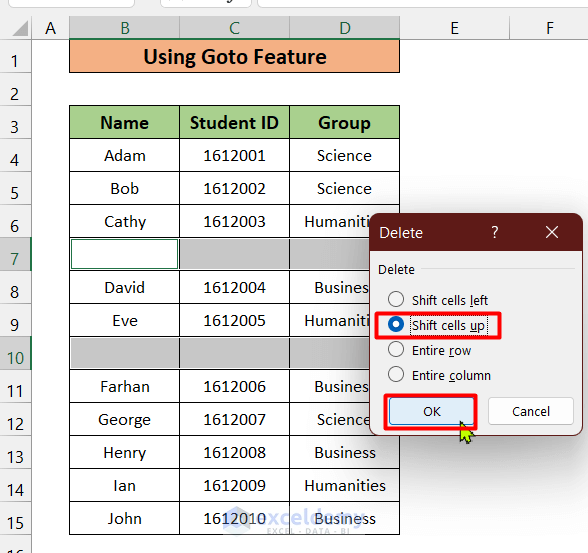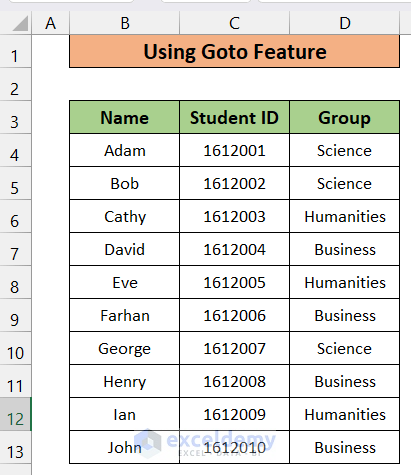Moving up and down in Excel is essential for efficient data review, analysis, and entry. This functionality allows for easy navigation to specific sections, simplifies the review of formulas and functions, and improves data visualization.
While working in Excel, we often need to move some cells up or down. Moreover, we may sometimes need to move an entire row up or down the spreadsheet.
In this Excel tutorial, we will demonstrate several techniques with relevant examples to move up or down rows and cells.
To shift a row upwards using the Shift key and mouse, I first choose a row and then place it in the upper position. You will notice that the selected row has moved up to the top, while the other cells have moved down by just one cell.
If you want to move any single cell or an entire row up or down, you can follow the methods mentioned below:
Using the Shift Key and Mouse
This is the simplest method to move cells or rows up and down. For illustration, we will first move the last row to the top.
To accomplish this task, follow the steps mentioned below:
- Select the row that you want to move in your Excel worksheet.
- Bring the mouse cursor to the top edge.
You will notice the Move Icon, which looks like a four-directional arrow icon. - Now hold the Shift key and drag it up to the top until you see an icon like this in the figure below.
- Now drop the selected row.
You will see that the selected row has come to the top, and the other cells have dropped just 1 cell below.
Note: This method is also applicable for multiple cells or rows at once. But they have to be adjacent to each other.
Using Insert Copied Cells Command
Another good way to move cells is to use the Copy and Insert Copied Cells commands. Suppose we want to move the cell D10 to D6 in the previous example.
To move cells in your worksheet, follow the steps below:
- Select the D10 cell > Home tab > Copy. Or, you can also do the same task by typing Ctrl+C.
- Now select the cell that you want to move > right-click on the mouse > Insert Copied Cells in the dialogue box like below.
After selecting the command, you will see another window like this.
- Here, select Shift cells down > OK.
- Now, in the following image:
- Here we can see that cell D6 has been replaced with D10.
- Also, the cells below D6 have been downed by one. Hence, the value in D13 has come to Cell D14.
- But as we don’t need the value in D14, we have to delete it.
Now, you can see the final result in the following image.
Note: You can also use this method to move multiple adjacent cells simultaneously.
Using Insert Cut Cells Command
The Cut and Insert Cut Cells commands provide an alternative and efficient method for moving cells. Unlike the previous method, this approach does not need to manually delete the last cell, as it is automatically done by Excel itself.
To perform this task, follow the necessary steps below:
- Select the D10 cell, go to the Home tab, and select Cut.
- You can also press Ctrl+x to cut the cell.
- Now, select cell D6 and right-click on the mouse.
A dialog box will appear, like in the below figure. - Now select the Insert Cut Cells option.
Then, you will get the final result shown in the following image.
Delete Specific Cells to Move Up and Down in Excel
If you have an empty cell(s) in your list, you can move cells up or down by deleting the empty cell(s). For example, in the list below, there are two blank cells.
To move the non-blank cells up, follow the steps below:
- Select the blank cells (C4 and C7). (For multiple selections, hold the Ctrl key and left-click on the cells to be selected after selecting the first cell.)
- Right-click on the mouse. A menu will appear. On the menu, select Delete.
Here, a new menu will pop up like this.
- Select Shift cells up and click.
Then you will see the result in the following mage.
This method can also move rows in a table, like the previous methods.
Read More: Viewing Multiple Workbooks: Synchronous Scrolling in Excel
Using Go to Special Feature
If you have a large number of data points, manually selecting blank cells will be challenging. Excel offers an easy way to find empty cells, which is the Go To Special feature. After finding the blank cells, you can delete them to move cells up or down, whichever you like. Here is an example of a list that contains some empty rows.
Follow the steps below to delete the blank cells and move the other cells:
- Firstly, select the whole table.
- Now click the f5 button, and a window will appear like this.
- In the window, select Special.
Then a new pop-up will appear like this: - In the Go To Special window, select Blanks and click OK.
You will see that all the empty cells in the selection are being highlighted.
- Now right-click on the selection and select Delete.
A new dialogue box will pop up like this.
- Select Shift cells up and click OK.
Finally, you will see the result in the following image.
Read More: How to Scroll One Row at a Time in Excel
Download Practice Workbook
Download this practice workbook to exercise while you are reading this article.
Conclusion
In this article, you will learn several methods in Excel to move rows and cells up or down, including using the Shift key and mouse, the Insert Copied Cells command, the Insert Cut Cells command, deleting specific cells, and using the Go To Special feature. These methods are useful for efficient data review, analysis, and entry. If you find this article helpful, please share it with your friends. Moreover, do let us know your suggestions and feedback in the comment section. Goodbye!
Frequently Asked Questions
Can I customize shortcuts for moving rows and cells in Excel?
Yes, you can customize Excel shortcuts according to your preferences. To accomplish this, navigate to the File tab > Options > Advanced > Lotus compatibility section. Then, you can assign personalized keys for moving rows and cells to your specific needs.
Are there Excel shortcuts for moving entire columns efficiently?
To select and move entire columns quickly, click on the column letter, hold down the Shift key, and then click on another column letter. Alternatively, use the arrow keys while holding down the Shift key to extend your column selection.
Is there a way to navigate through Excel using a keyboard shortcut to switch between worksheets?
Absolutely! Use “Ctrl + PgUp” to move to the previous worksheet and “Ctrl + PgDn” to move to the next one. This is a quick and convenient way to navigate between different sheets within the same workbook.
Related Articles
- How to Repeat Rows in Excel When Scrolling
- [Fixed!] Excel Scrolling Too Many Rows
- How to Limit Scroll Area in Excel
- Smooth Scrolling with Mouse Wheel in Excel
<< Go Back to Scrolling in Excel | Navigation in Excel | Learn Excel
Get FREE Advanced Excel Exercises with Solutions!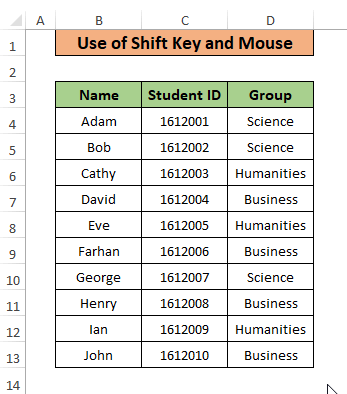
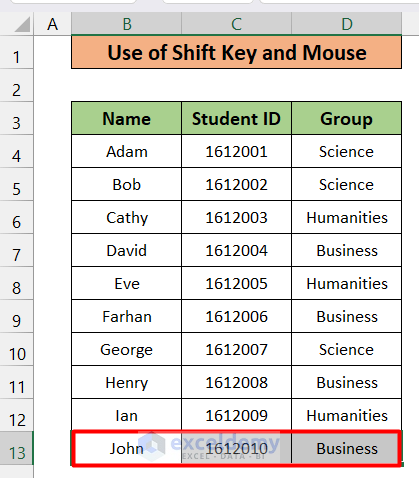
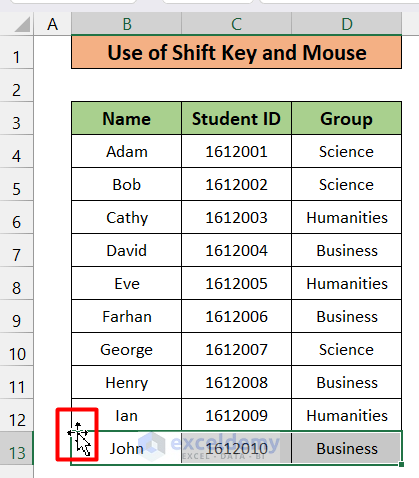
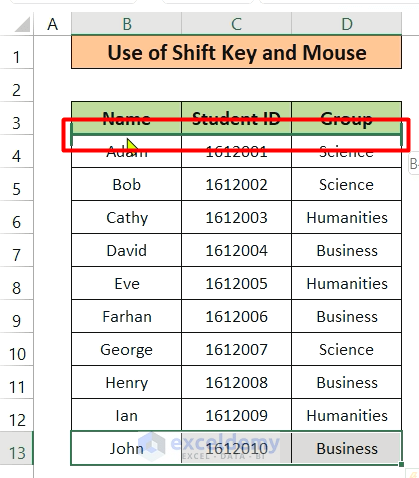
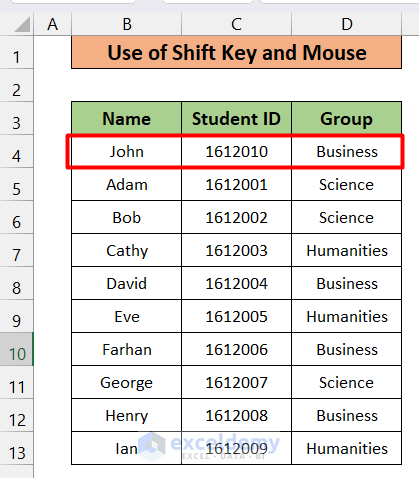
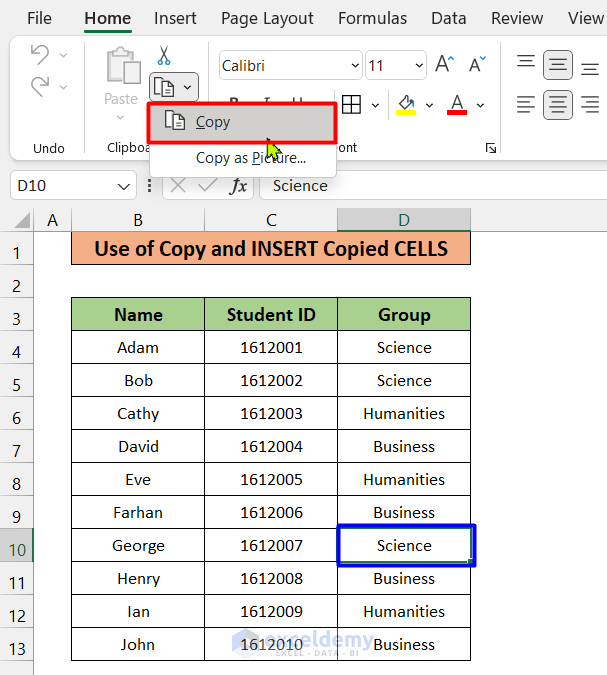
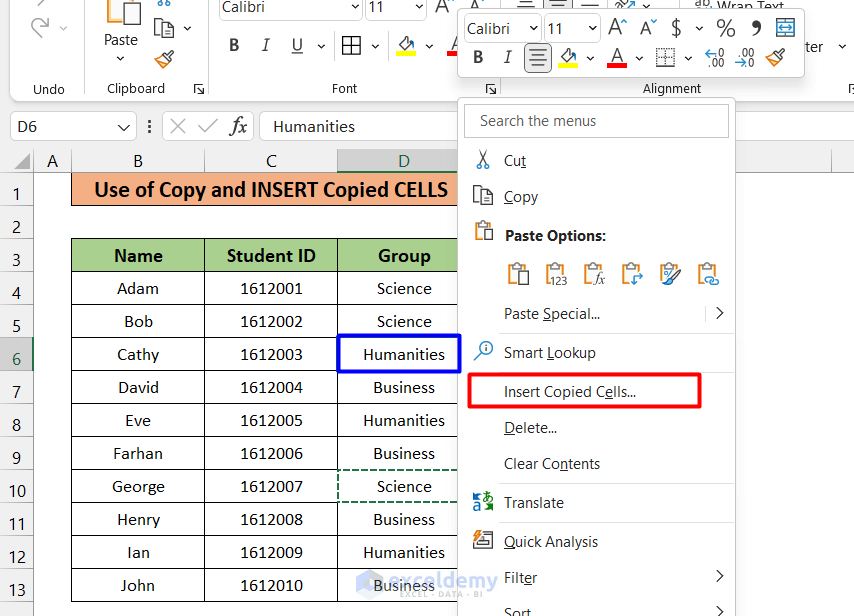 After selecting the command, you will see another window like this.
After selecting the command, you will see another window like this.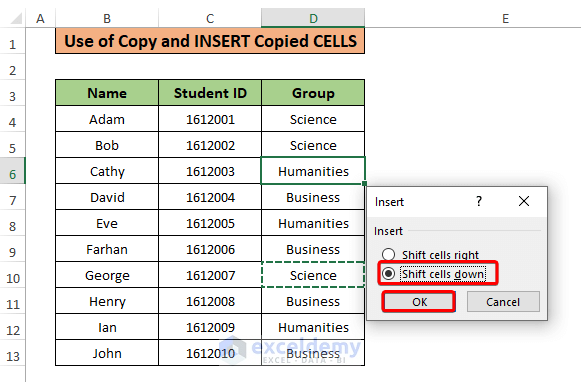
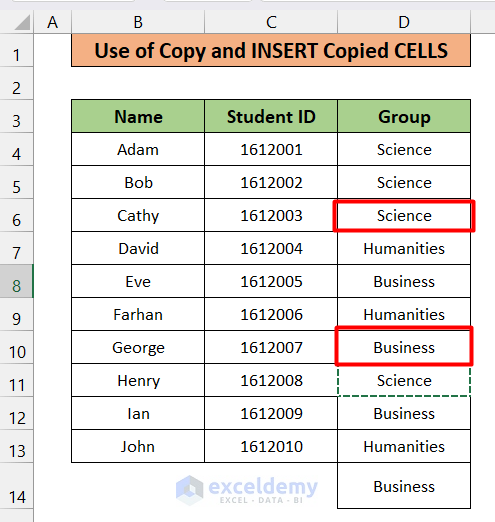
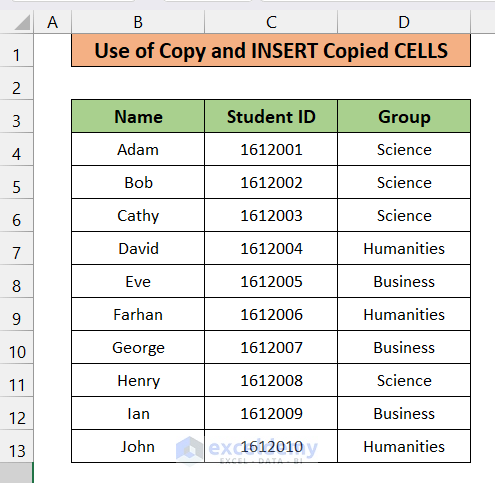
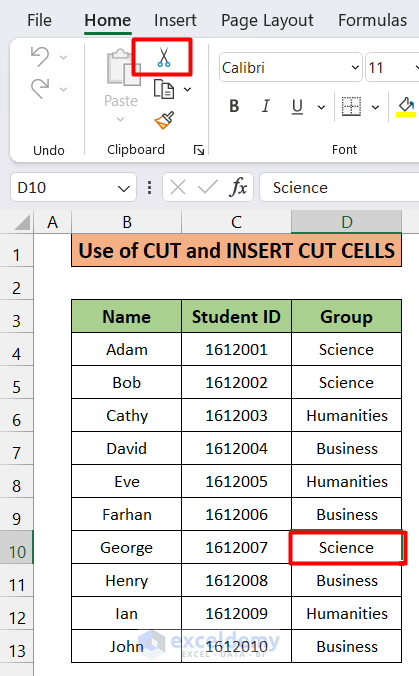
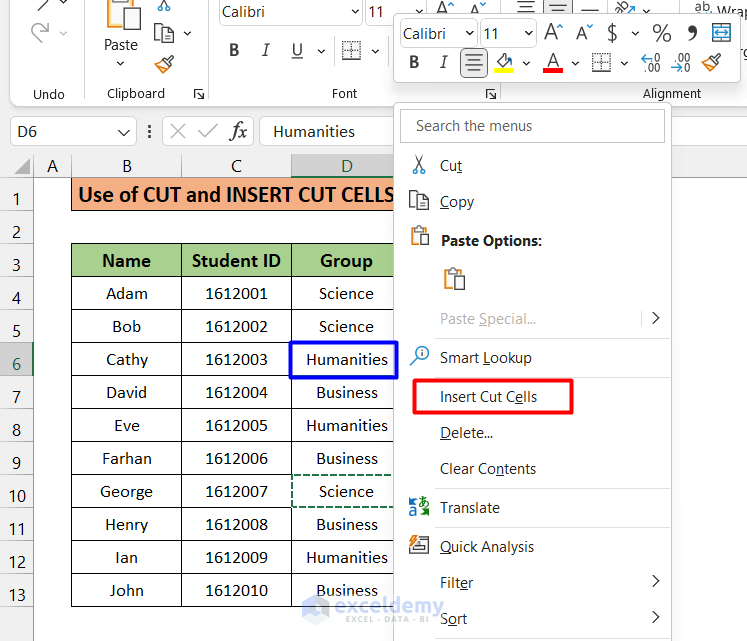
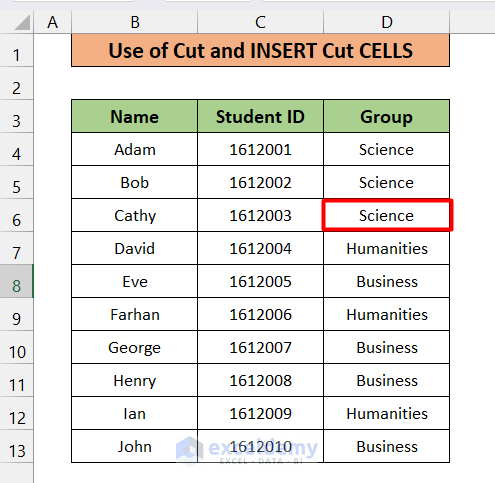
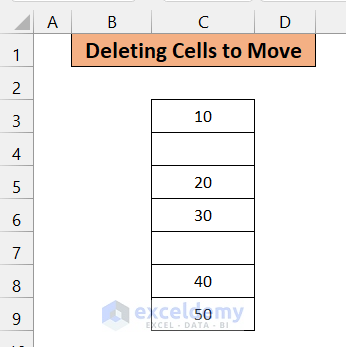
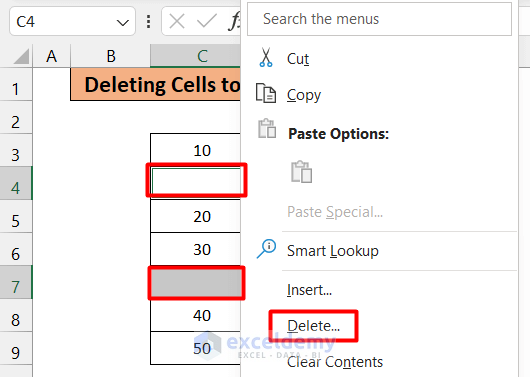 Here, a new menu will pop up like this.
Here, a new menu will pop up like this.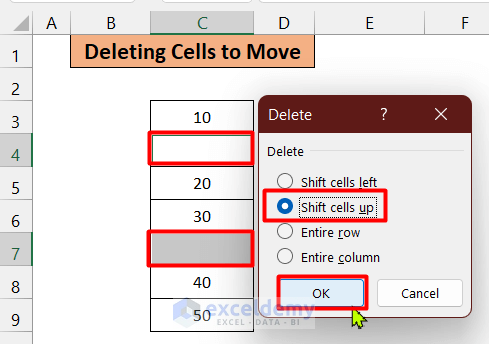
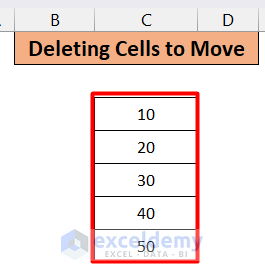
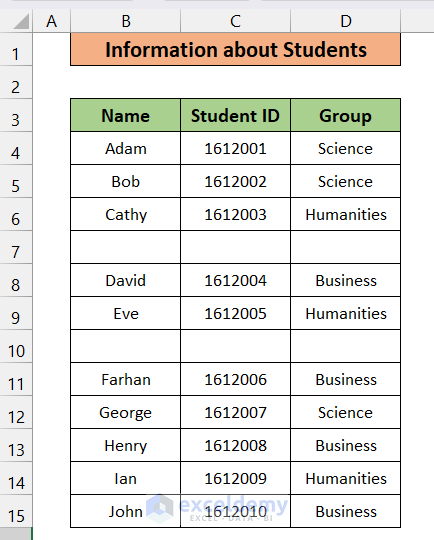

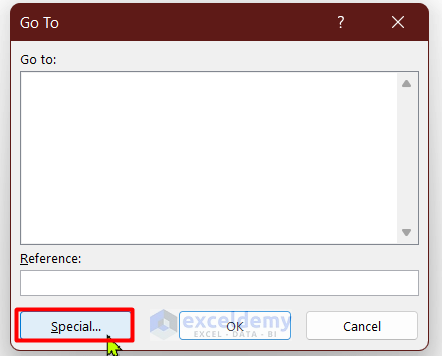
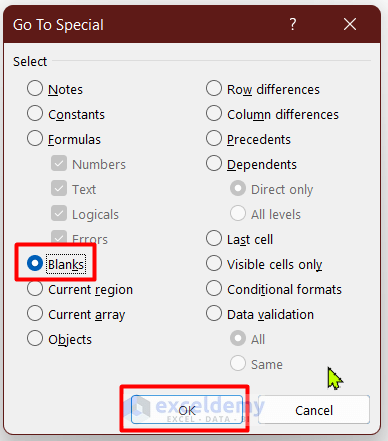 You will see that all the empty cells in the selection are being highlighted.
You will see that all the empty cells in the selection are being highlighted.
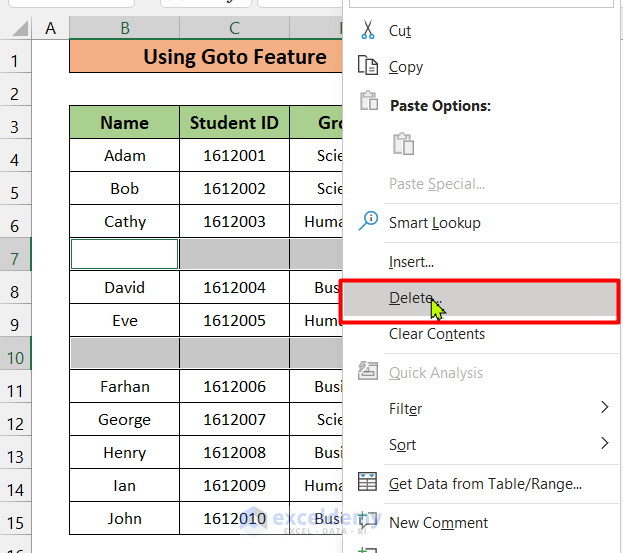 A new dialogue box will pop up like this.
A new dialogue box will pop up like this.